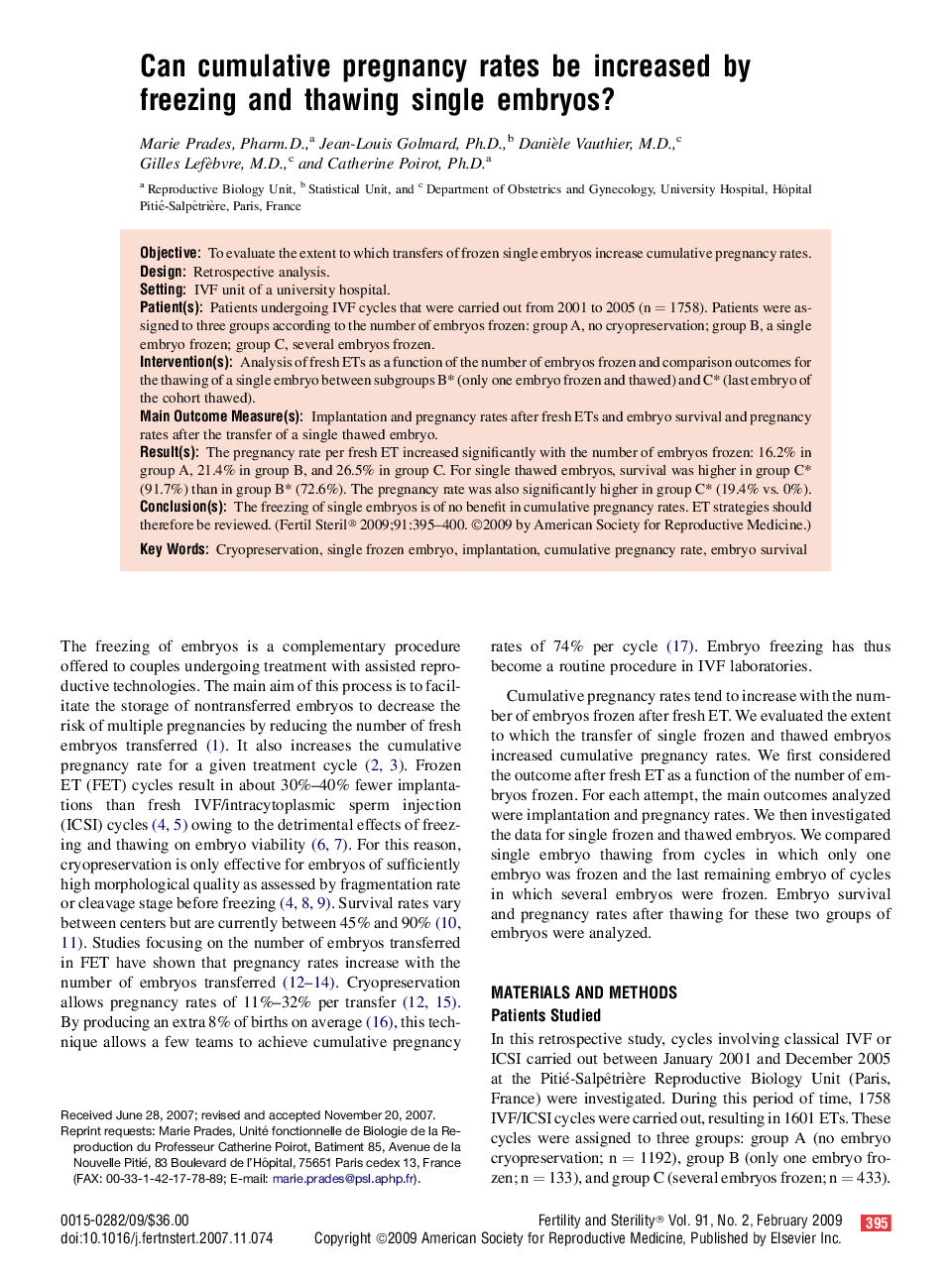| Article ID | Journal | Published Year | Pages | File Type |
|---|---|---|---|---|
| 3938870 | Fertility and Sterility | 2009 | 6 Pages |
ObjectiveTo evaluate the extent to which transfers of frozen single embryos increase cumulative pregnancy rates.DesignRetrospective analysis.SettingIVF unit of a university hospital.Patient(s)Patients undergoing IVF cycles that were carried out from 2001 to 2005 (n = 1758). Patients were assigned to three groups according to the number of embryos frozen: group A, no cryopreservation; group B, a single embryo frozen; group C, several embryos frozen.Intervention(s)Analysis of fresh ETs as a function of the number of embryos frozen and comparison outcomes for the thawing of a single embryo between subgroups B∗ (only one embryo frozen and thawed) and C∗ (last embryo of the cohort thawed).Main Outcome Measure(s)Implantation and pregnancy rates after fresh ETs and embryo survival and pregnancy rates after the transfer of a single thawed embryo.Result(s)The pregnancy rate per fresh ET increased significantly with the number of embryos frozen: 16.2% in group A, 21.4% in group B, and 26.5% in group C. For single thawed embryos, survival was higher in group C∗ (91.7%) than in group B∗ (72.6%). The pregnancy rate was also significantly higher in group C∗ (19.4% vs. 0%).Conclusion(s)The freezing of single embryos is of no benefit in cumulative pregnancy rates. ET strategies should therefore be reviewed.
